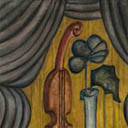0254 "The Post-Party Spleen". The Topos of Crisis in Polish Art Criticism of the 1930s
Identifiers (Article)
Abstract
The 1930s in Polish art criticism were marked by crisis and exhaustion of previously respected artistic values. Critics of that time were surprisingly unanimous in their belief that the fault rested with the artists – particularly those whose pursuit of increasingly innovative artistic means led them to break ties with the society, enclose art within the ivory tower of avant-garde '-isms', those hermetic laboratories of theoretical speculation. In the eyes of the majority of then-active journalists, it was modernism that became the synonym of the crisis that afflicted contemporary culture – a crisis whose basic symptoms included the lack of spirituality, power of expression, or interest in the human being. Those statements identifying the general 'malaise' of the era came with attempts to pinpoint the reasons for this state of affairs as well as find solutions to overcome the obvious impasse of Polish (or wider, European) culture, and visual arts with it.
Statistics


License

This work is licensed under a Creative Commons Attribution-NonCommercial-NoDerivatives 4.0 International License.



